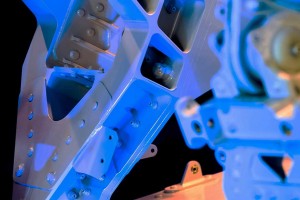Examples Of Heavy Deposition
- Metal Coating of non-metallic components made of materials such as carbon, various plastics or graphite/graphite composites
- Buildup of worn shafts, bearing races or mold surfaces
- Fill in of improperly machined areas for re-machining
- Bonding of two or more metal components together without the heat associated with traditional welding / brazing operations
- Creating high thermal transfer heating and cooling channels
- The addition of integral or attached structural reinforcements
Unlike electroforming in which the electrodeposit is removed from a master mandrel, heavy deposition is the science of adherently depositing a metallic layer over a metallic or non-metallic substrate. In this case we do not actually create a component, rather we augment the properties of the original surface to make it more suitable for its designated task. Increased surface hardness or an atmospheric barrier layer can be applied in layers over 1″ thick, for example. However when you combine electroforming and heavy deposition processes you now have a method of joining two electroforms together to create components which require hidden machined areas. Examples of such components are Integrally cooled heat exchangers with exotic channel designs or reinforcements placed within a component to maintain rigidity while lowering its weight and maintaining its external dimensions.


